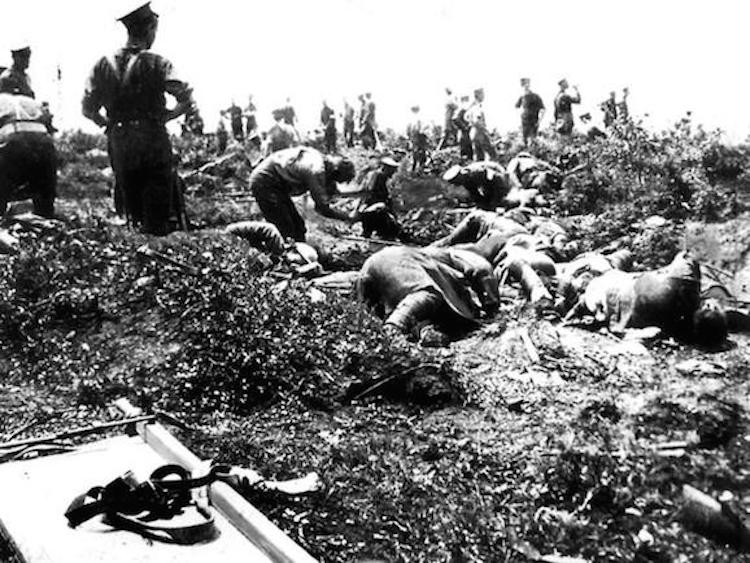Gallipoli, Dardanelles 1915–16

Australian troops burying Turkish dead at Anzac Cove, May 25th 1915.
Image Q42315 courtesy of the Imperial War Museum
Gallipoli, Dardanelles
April 25th 1915 – January 9th 1916
Military disaster in which 34,000 British troops and around 11,000 ANZACS were killed. Naval operations by the Allied troops began in the Dardanelles in January 1915. British Empire and French Forces landed on the Gallipoli peninsula on April 25th 1915; British troops were evacuated on January 9th, 1916. The Mediterranean Expeditionary Force was present (nine British Divisions, the Australian Corps and the New Zealand Corps).
May 8th 1915, Private 6/1468 George Blatherwick, 3rd Reinforcement, Canterbury Regiment, New Zealand Expeditionary Force, who emigrated from Radcliffe to work as a farmer in New Zealand, was missing in action, age 23. Death later confirmed. The Canterbury Regiment was fighting the second battle of Krithia at the time.
From http://www.nzhistory.net.nz/war/the-gallipoli-campaign/early-battles
“Unable to break through at Anzac, Hamilton focused the MEF’s energies on the Helles sector, targeting the village of Krithia (Alҫitepe) and the hill known as Achi Baba (Alҫitepe). An attack by British and French forces on 28 April – the First Battle of Krithia – made little headway and cost some 3000 casualties. In the Second Battle of Krithia, which began on 6 May, the Allies launched a series of unsuccessful daylight assaults on the Ottoman trenches. They suffered heavy losses and were unable to break through. The New Zealand Infantry Brigade went into action on the 8th, tasked with capturing Krithia. It was a disaster – the New Zealanders had little time to prepare and attacked behind a weak artillery barrage. The troops charged across the Daisy Patch into a hail of Ottoman machine-gun and rifle fire. The New Zealand infantry suffered 835 casualties and achieved nothing, an experience repeated all along the line. By the time Hamilton broke off the attack that evening, the Allies had lost 6500 men killed or wounded and advanced just 500m.”
